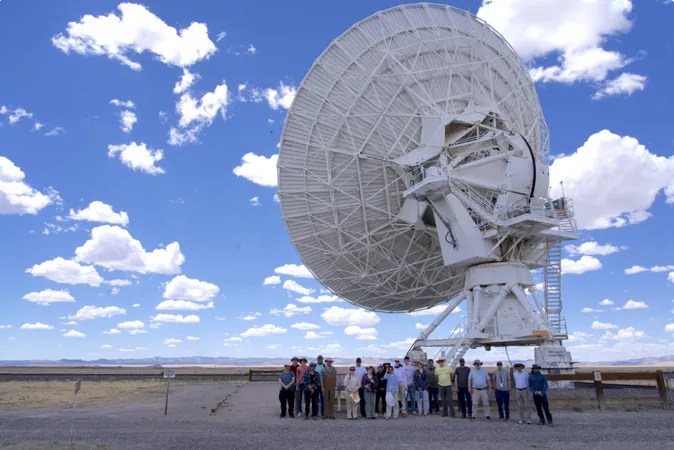
Unlocking Clean Energy: Fairy Circles May Hold the Key to Natural Hydrogen Reserves
2025-09-02
Author: Arjun
The Quest for Clean Energy Alternatives
As the global push for cleaner energy sources intensifies, researchers are investigating unconventional options. Among these, natural hydrogen—found deep underground—emerges as a promising candidate for a sustainable energy future.
Fairy Circles: Nature’s Hidden Clue?
A recent study from the University of Vienna highlights how bizarre formations known as fairy circles could reveal untapped reserves of this elusive hydrogen. These circular patches of land, where vegetation mysteriously fails to thrive, may actually signal rich deposits of natural hydrogen beneath the Earth's surface.
What Exactly Are Fairy Circles?
Fairy circles are intriguing, circular patterns that pepper diverse landscapes around the globe—from the arid expanses of Namibia to the lushness of Brazil. Often spanning hundreds of meters, these enigmatic formations exhibit stark contrasts with their surroundings due to the nearly barren soil within them.
The Mystique of Fairy Circles Unraveled
For years, the origins of these circles baffled scientists, with theories ranging from termite activity to natural gas leaks. However, a decade ago, researchers recognized that these barren patches are active sites of hydrogen escape from submerged reservoirs, linking them to one of the cleanest energy sources available.
Understanding the Formation of Fairy Circles
Despite this breakthrough, the mechanisms behind their formation remain largely unclear. Martin Schöpfer from the University of Vienna emphasizes the importance of understanding these structures to determine how deep drilling might effectively tap into natural hydrogen reserves.
The Soufflé Effect: How Hydrogen Shapes the Land
Schöpfer's team conducted computer simulations to explain why these fairy circles subside. They liken the phenomenon to a soufflé: as hydrogen enters loose sediments, it displaces water, causing the soil to bulge and vegetation to die off. When hydrogen flow ceases, the sediment settles like a deflated soufflé.
Promising Findings and Future Implications
The research revealed a striking correlation between the size of fairy circles and the depth of hydrogen sources, suggesting that larger circles could indicate richer reserves. "These findings could revolutionize how we locate underground hydrogen sources," notes Bernhard Grasemann, deputy head of the Department of Geology.
A Natural Solution to Carbon Emissions?
The energy industry is taking notice of these developments. With its negligible carbon footprint, natural hydrogen represents a compelling alternative to various artificially produced forms of hydrogen. Gabor Tari, chief geologist at OMV, believes natural hydrogen could become a cost-effective and environmentally friendly energy source.
Charting New Research Directions
While the potential is immense, more studies are essential. Schöpfer stresses that future research should evaluate different soil types and simulate varying gas emissions to deepen our understanding of these phenomena.
Conclusion: A Game Changer for Energy Strategies?
If fairy circles indeed serve as natural indicators for underground hydrogen, they could significantly influence global energy strategies, paving the way for innovative, carbon-neutral energy systems. This could lead industries toward reducing reliance on fossil fuels and embracing sustainable energy solutions.
Stay tuned as research continues to unfold, potentially carrying us closer to a cleaner, greener future driven by the untapped powers of natural hydrogen.





 Brasil (PT)
Brasil (PT)
 Canada (EN)
Canada (EN)
 Chile (ES)
Chile (ES)
 Česko (CS)
Česko (CS)
 대한민국 (KO)
대한민국 (KO)
 España (ES)
España (ES)
 France (FR)
France (FR)
 Hong Kong (EN)
Hong Kong (EN)
 Italia (IT)
Italia (IT)
 日本 (JA)
日本 (JA)
 Magyarország (HU)
Magyarország (HU)
 Norge (NO)
Norge (NO)
 Polska (PL)
Polska (PL)
 Schweiz (DE)
Schweiz (DE)
 Singapore (EN)
Singapore (EN)
 Sverige (SV)
Sverige (SV)
 Suomi (FI)
Suomi (FI)
 Türkiye (TR)
Türkiye (TR)
 الإمارات العربية المتحدة (AR)
الإمارات العربية المتحدة (AR)